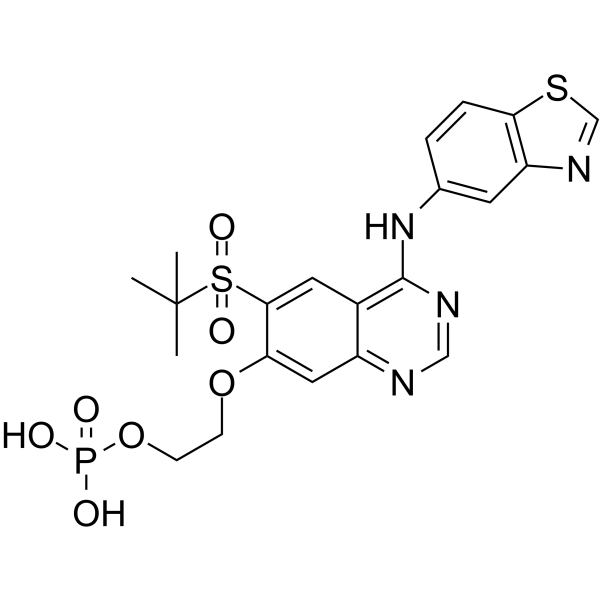
GSK2983559 free acid
CAS No. 1579965-12-0
GSK2983559 free acid( —— )
Catalog No. M26238 CAS No. 1579965-12-0
GSK2983559 free acid is an effective and selective inhibitor of receptor-interacting protein 2 (RIP2).
Purity : >98% (HPLC)
 COA
COA
 Datasheet
Datasheet
 HNMR
HNMR
 HPLC
HPLC
 MSDS
MSDS
 Handing Instructions
Handing Instructions
| Size | Price / USD | Stock | Quantity |
| 5MG | 87 | Get Quote |


|
| 10MG | 135 | Get Quote |


|
| 25MG | 226 | Get Quote |


|
| 50MG | 338 | Get Quote |


|
| 100MG | 507 | Get Quote |


|
| 200MG | Get Quote | Get Quote |


|
| 500MG | Get Quote | Get Quote |


|
| 1G | Get Quote | Get Quote |


|
Biological Information
-
Product NameGSK2983559 free acid
-
NoteResearch use only, not for human use.
-
Brief DescriptionGSK2983559 free acid is an effective and selective inhibitor of receptor-interacting protein 2 (RIP2).
-
DescriptionGSK2983559 free acid is an effective and selective inhibitor of receptor-interacting protein 2 (RIP2). GSK2983559 free acid shows excellent activity in blocking many proinflammatory cytokine responses in human inflammatory bowel disease explant samples.
-
In VitroGSK2983559 (1-1024 nM; 2 h) blocks MDP-induced IL-8 in THP-1 cells. Cell Viability Assay Cell Line:THP-1 cells Concentration:1-1024 nM Incubation Time:2 hours Result:Inhibited IL-8 production with an IC50 of 1.34 nM.
-
In VivoGSK2983559 (oral gavage; 3 and 10 mg/kg; once) inhibits effectively MDP-induced IL-6 in mouse. Animal Model:C57BL/6 mice (female) injected with MDP (100 μg) Dosage:3 and 10 mg/kg Administration:Oral gavage; 3 and 10 mg/kg; once Result:Suppressed serum IL-6 levels in a dose-dependent manner.
-
Synonyms——
-
PathwayOthers
-
TargetOther Targets
-
Recptorleucyl-tRNA synthetase| Ras-related GTP-binding protein D (RagD)
-
Research Area——
-
Indication——
Chemical Information
-
CAS Number1579965-12-0
-
Formula Weight538.53
-
Molecular FormulaC21H23N4O7PS2
-
Purity>98% (HPLC)
-
SolubilityIn Vitro:?DMSO : 5 mg/mL (9.28 mM)
-
SMILESCC(C)(C)S(=O)(=O)c1cc2c(Nc3ccc4scnc4c3)ncnc2cc1OCCOP(O)(O)=O
-
Chemical Name——
Shipping & Storage Information
-
Storage(-20℃)
-
ShippingWith Ice Pack
-
Stability≥ 2 years
Reference
1.Jong Hyun Kim, et al. Control of leucine-dependent mTORC1 pathway through chemical intervention of leucyl-tRNA synthetase and RagD interaction. Nat Commun. 2017 Sep 29;8(1):732.
molnova catalog



related products
-
R-IMPP
R-IMPP is an inhibitor of PCSK9 translation. R-IMPP stimulates uptake of LDL-C in hepatoma cells by increasing LDL-R levels, without altering levels of secreted transferrin.
-
Trofosfamide
Trofosfamide is a derivative of oxazaphosphorine with antineoplastic potency.
-
Beta-Tocotrienol
Beta-Tocotrienol to serve as a new anticancer agent for treating human lung and brain cancers. It inhibits the growth of both A549 (GI50=1.38±0.334μM) and U87MG (GI50=2.53±0.604μM) cells at rather low concentrations.



 Cart
Cart
 sales@molnova.com
sales@molnova.com


